AI Tools for Predicting Plant Disease Outbreaks
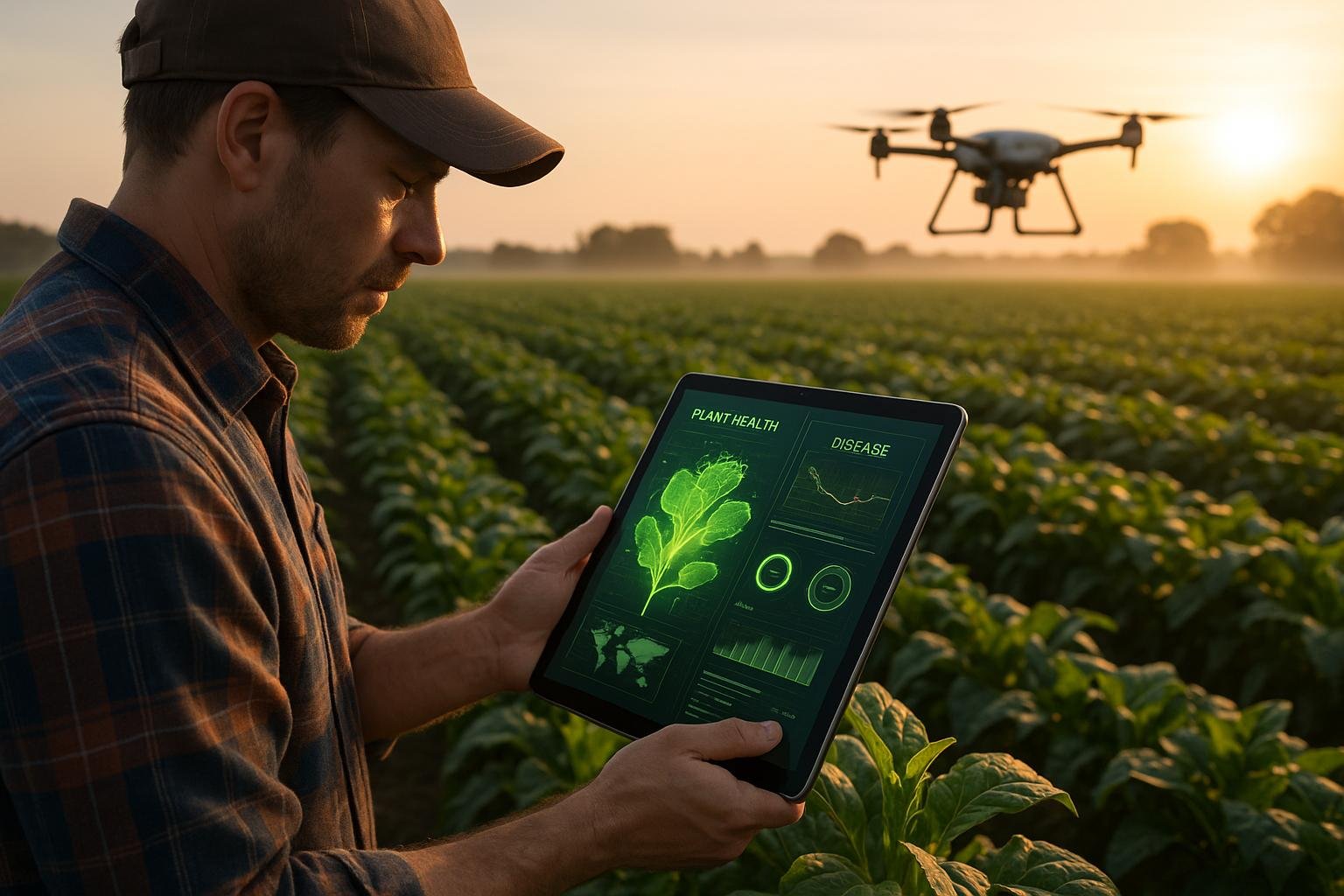
AI-powered tools are transforming how farmers protect crops by identifying and predicting plant diseases with high accuracy. These tools combine real-time monitoring, predictive analytics, and user-friendly platforms to help reduce crop losses, improve yields, and minimize pesticide use. Here's a quick overview of the top solutions:
- Farmonaut AI Plant App: Combines satellite imagery and AI for disease detection and forecasting. Affordable plans starting at $49.90/year.
- PlantVillage Nuru: Offline mobile app for quick disease diagnosis and outbreak prediction.
- IBM Watson Decision Platform: Enterprise-level AI with IoT integration for advanced monitoring and forecasting.
- PEAT Plantix: Mobile app for diagnosing 385+ diseases across 60 crops, with free and paid options.
- Taranis: Uses high-resolution aerial imagery for precise disease detection and detailed analytics.
- AgroScout: Drone and smartphone-based system for real-time monitoring and predictive modeling.
- DeepDetect: Deep learning platform with 99%+ accuracy for disease detection.
- Microsoft Azure FarmBeats: Cloud-based platform combining sensor, drone, and satellite data for early detection.
- PlantDoc: Mobile app for field-based disease detection tailored to U.S. crops.
- AI-Powered Scouting Apps: General smartphone tools offering fast diagnostics and outbreak forecasts.
Key Benefits:
- Early disease detection (up to 99% accuracy).
- Predictive analytics to prevent outbreaks.
- Mobile and web accessibility for ease of use.
- Support for U.S.-specific crops like corn, soybeans, and wheat.
These tools save time, reduce costs, and support sustainable farming practices, making them indispensable for modern agriculture.
Using AI to Identify Plant Disease, Track Insect Infestations, and Improve Food Security

1. Farmonaut AI Plant App
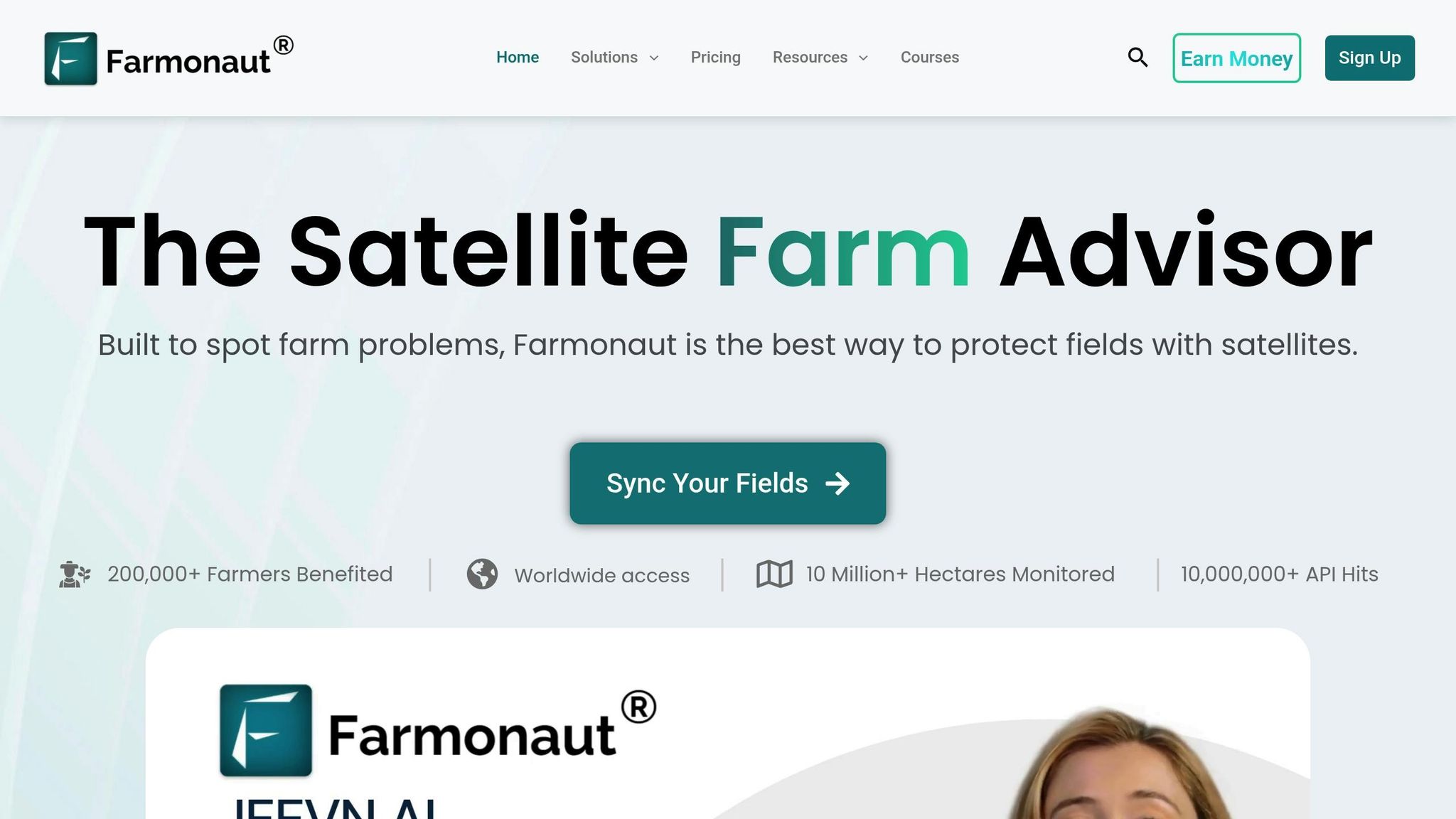
The Farmonaut AI Plant App combines satellite imagery with advanced AI to help farmers predict and prevent plant disease outbreaks. With over 200,000 farmers across 15+ countries already using the platform [4], it’s clear this tool is making waves. For American farmers, it stands out by delivering precise, actionable insights through easily accessible platforms.
Real-time Monitoring and Disease Detection
Farmonaut uses satellite imagery and AI to keep a constant eye on crop health. Farmers can monitor their fields remotely, identifying potential disease hotspots before they become visible. By analyzing vegetation indices and environmental factors, the system flags areas showing early signs of stress or disease risk.
The app has sent more than 50,000 advisory messages to farmers [5], providing timely alerts that allow for immediate action when anomalies in crop health are detected. Beyond just identifying issues, Farmonaut uses predictive analytics to anticipate disease outbreaks, giving farmers a head start in protecting their crops.
Predictive Analytics to Stay Ahead
Farmonaut’s predictive analytics feature leverages historical data, weather conditions, soil moisture, and crop growth stages to determine the best times for preventive treatments. This approach helps reduce crop losses while minimizing the use of unnecessary pesticides.
The system takes into account factors like temperature changes, humidity, and rainfall patterns - key elements in the development of plant diseases. By analyzing multiple variables at once, it provides farmers with reliable forecasts to make informed decisions.
Easy Access via Mobile and Web
Farmonaut is available on both mobile and web platforms, making it convenient for farmers to stay connected to their fields whether they’re on-site or at home. The mobile app boasts a 4.0 out of 5 rating on the App Store [6], reflecting its ease of use and functionality.
To ensure inclusivity, the app offers multilingual support [5], which is particularly helpful for the diverse farming communities across the United States, including areas with large immigrant populations.
Tailored for U.S. Crops and Conditions
Although Farmonaut is a global platform, its AI models are trained to handle a wide range of crops and growing conditions, including those specific to the U.S. This adaptability has resulted in a 90% satisfaction rate among farmers [5], proving its effectiveness in various agricultural settings.
Farmonaut’s pricing is designed to suit farms of all sizes, with plans starting at $49.90 annually for the Mini plan, $29.99/month for the Basic plan, and $64.99/month for the Standard plan. This tiered structure allows farmers to choose the features and level of support that fit their needs and budgets.
2. PlantVillage Nuru
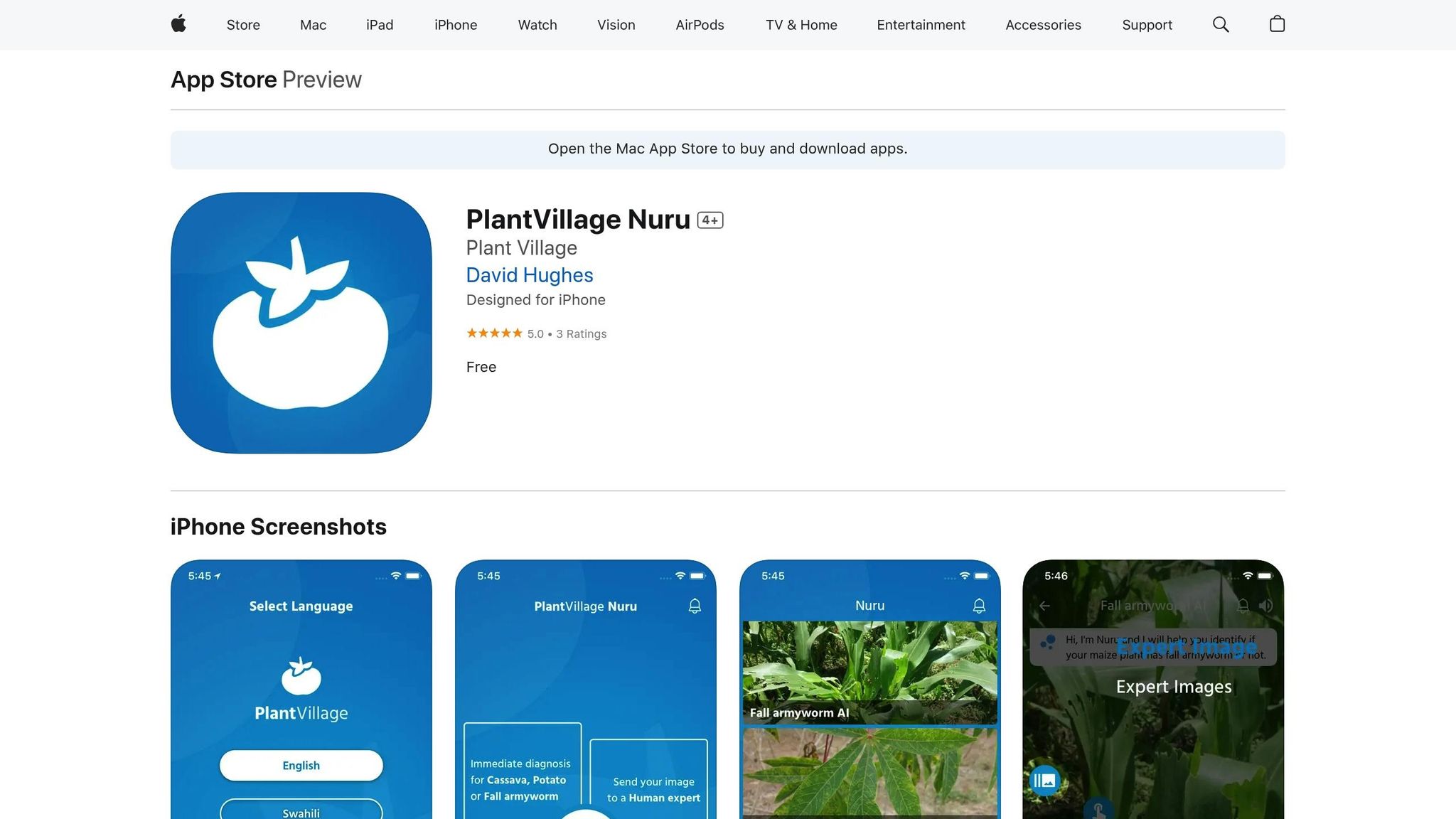
PlantVillage Nuru is a mobile AI assistant created at Penn State University, designed to deliver accurate plant disease diagnoses straight to your smartphone. One of its standout features? It works entirely offline, making it an invaluable tool for farmers in remote areas without internet access. This offline capability ensures that even those in the most isolated places can benefit from cutting-edge diagnostics.
Real-time Monitoring and Disease Detection
Nuru uses a massive database of 61,486 plant leaf images processed through TensorFlow-powered convolutional neural networks (CNNs) to deliver quick and precise diagnoses [8].
In October 2017, Nuru was tested against traditional extension workers for diagnosing cassava diseases. The results? Nuru was twice as accurate as human experts [15,16]. What makes this tool even more effective is its hybrid model: while the AI handles the initial analysis, it also connects users to human experts via a cloud-based platform for even more precise results.
Predictive Analytics for Outbreak Forecasting
Nuru doesn't just stop at identifying diseases - it also predicts potential outbreaks. Its anomaly detection and forecasting capabilities give farmers the tools to prepare for future risks by analyzing environmental conditions and disease trends [7].
One success story highlights the app's impact: a farmer used Nuru to confirm healthy cassava crops, propagated clean cuttings, and planted a disease-free 1-acre field. At harvest, only 1.13% of the plants showed signs of disease, resulting in a 146% increase in yield and a 55% boost in revenue compared to the previous season [7]. This example underscores how Nuru's predictive features can lead to tangible improvements in both productivity and income.
Mobile and Web Accessibility
Designed with simplicity in mind, Nuru is easy to use. By mid-2018, the app had been downloaded by users across all continents and was particularly popular in Africa and Southeast Asia [7]. Its offline functionality is especially helpful for farmers in regions with limited internet access.
The process is straightforward: farmers snap a photo of a plant's affected leaves, and the AI delivers a diagnosis. This user-friendly approach ensures that even those with minimal technical expertise can benefit from the app.
Support for U.S.-Specific Crops and Regions
To meet the needs of U.S. farmers, Nuru has expanded its capabilities to include crops commonly grown in the United States. While the app initially focused on cassava, its advanced image analysis technology and access to the world’s largest open library of crop health knowledge [9] make it adaptable to a wide range of crops.
Developed with American agriculture in mind, Nuru benefits from ongoing collaborations between PlantVillage and local universities. These partnerships aim to enhance computer vision and machine learning tools, showcasing how artificial intelligence can play a vital role in addressing agricultural challenges efficiently and affordably [10].
🚀 Ready to Reinvent Your Garden?
Join thousands of homeowners who have transformed their gardens using our AI design tool. Upload one photo to explore endless possibilities.
Get your AI garden designs →3. IBM Watson Decision Platform for Agriculture
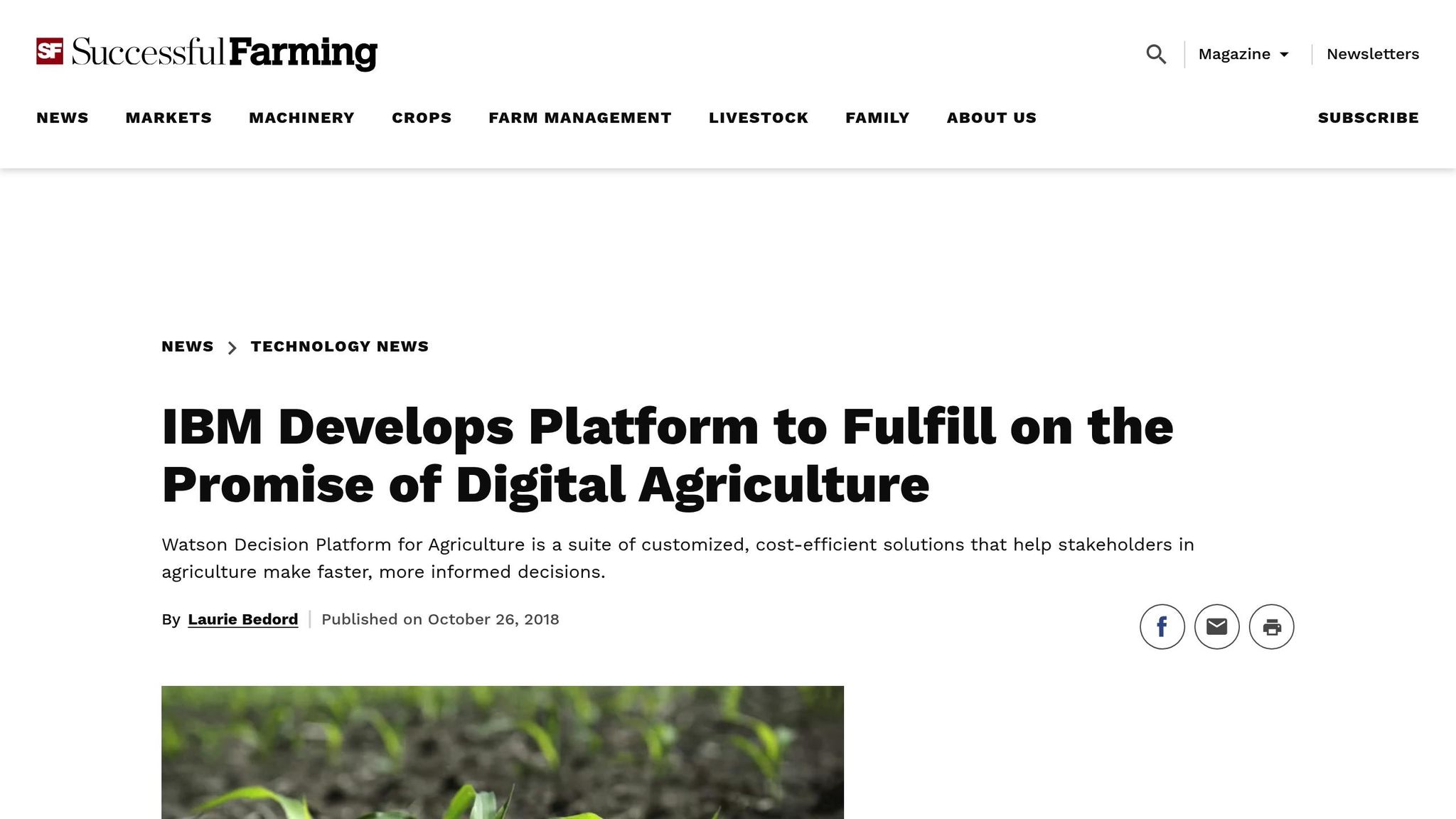
The IBM Watson Decision Platform for Agriculture introduces enterprise-level AI to farming practices across the United States. By combining advanced predictive technology with data from The Weather Company and IoT sensors, this platform offers actionable insights at every stage of crop production - from planning to harvesting [11].
IBM Watson processes vast amounts of agricultural data and transforms it into practical insights for farmers, simplifying decision-making through seamless enterprise integration.
Real-time Monitoring and Disease Detection
Using AI-powered visual recognition, IBM Watson can identify crop diseases and pest infestations from drone footage or close-up photos [14]. This technology enables farmers to detect issues early, preventing them from spreading across entire fields.
Take Roric Paulman, a third-generation farmer managing 10,000 acres in Nebraska, as an example. He uses drones to capture footage of his cornfields or snaps close-up photos of plants, and Watson pinpoints the exact pest or disease affecting his crops [14].
"That means I can react in real-time and won't lose yield waiting for the agronomist", Paulman explains [14].
The platform integrates data from farm equipment, environmental sensors, and weather stations to give farmers a full view of their crop health. This includes details on soil temperature, moisture levels, crop stress, and potential disease risks [14].
Predictive Analytics for Outbreak Forecasting
IBM Watson doesn't just detect problems - it predicts them. The platform uses integrated forecasting tools to analyze soil, weather, and crop data simultaneously. By combining historical trends with real-time sensor data, it forecasts potential disease outbreaks and identifies the ideal timing for preventive measures [12] [13].
The AI-powered image recognition system can spot early signs of crop stress or infection, giving farmers an opportunity to act before the issue escalates. This proactive approach has helped stabilize farm incomes, increasing them by up to 10% through better timing and early disease alerts [12].
Mobile and Web Accessibility
IBM Watson consolidates all agricultural data into a single, user-friendly interface that works on smartphones and other devices. Farmers no longer need to juggle multiple apps; instead, they can access all critical information in one place while working in the field [12] [14].
Tailored for U.S. Crops and Regions
The platform supports crop models for key U.S. agricultural staples, including corn, wheat, soy, cotton, sorghum, barley, sugar cane, and potatoes [11]. Its adaptability makes it a valuable tool across various regions and farming sectors.
In water-scarce areas, the platform has proven especially useful. For instance, Roric Paulman uses it in Southwest Nebraska to make smarter irrigation decisions. This not only helps him save money but also conserves water in a restricted basin [11].
Another standout feature of the platform is its independence from equipment manufacturers and input suppliers, which has earned the trust of farmers. As Paulman notes:
"I've been waiting for something like this. IBM has independence. They're not trying to sell me more fertilizer or machines. They don't have a horse in the race. It's a trust thing" [14].
4. PEAT Plantix
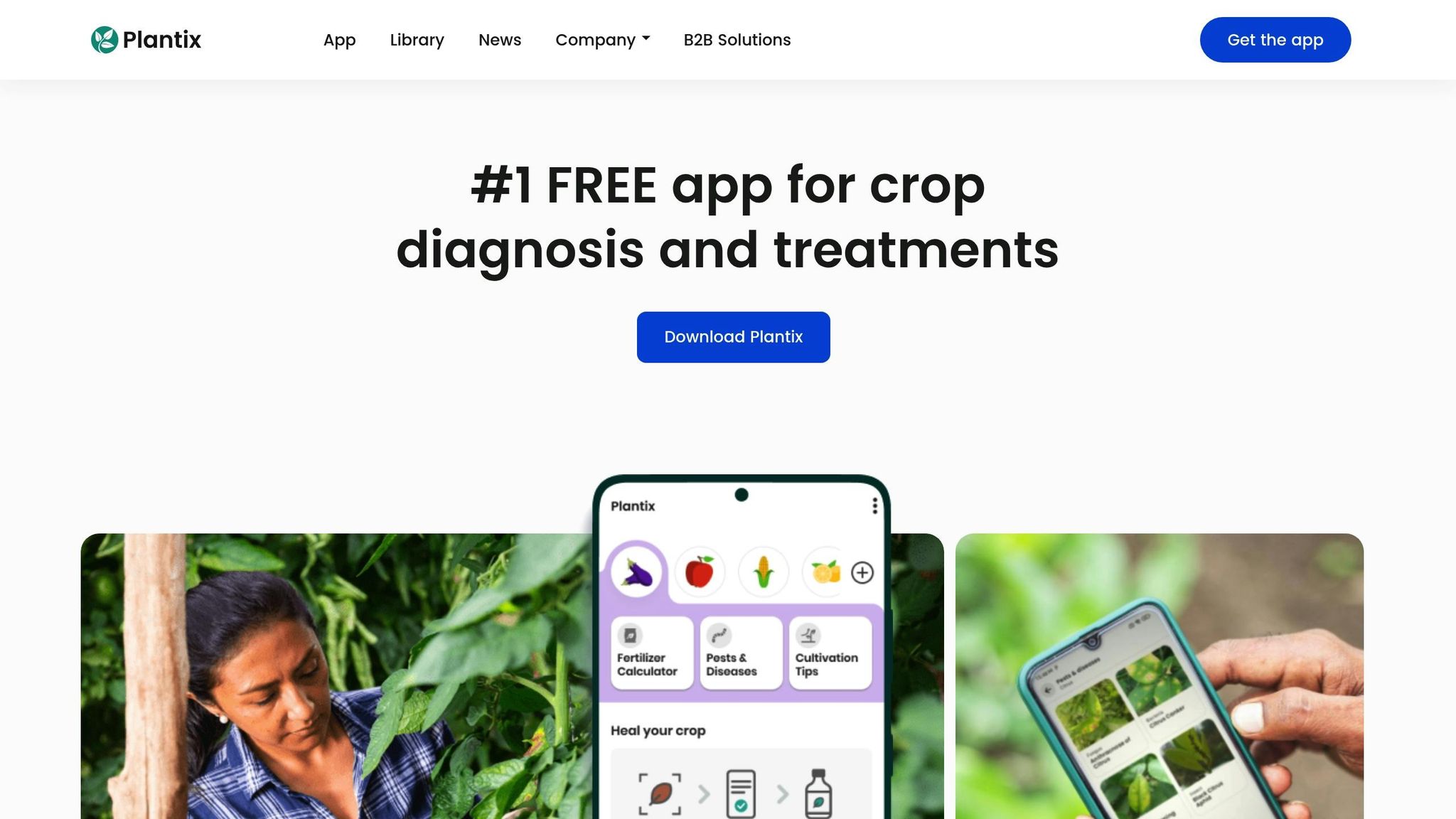
PEAT Plantix is a mobile app powered by AI that helps farmers identify and manage crop diseases. With over 135 million downloads globally and nearly 10 million farmers using it annually, Plantix has created the largest community-driven database for crop health. The app can recognize 800 symptoms across 60 crop types and diagnose more than 385 diseases affecting field crops, fruits, and vegetables [15][16]. It combines real-time analysis with practical advice to support farmers in managing their crops effectively.
Real-time Monitoring and Disease Detection
Plantix allows farmers to snap photos of their crops showing signs of disease. These images are analyzed instantly, and the app provides a diagnosis. According to Rob Strey, the AI algorithms used by Plantix achieve an accuracy rate of over 90%, far surpassing the 60-70% accuracy typical of human experts [15]. The platform processes up to 250,000 images daily, drawing from a massive database of over 120 million photos. Each photo contributes anonymized metadata - like GPS coordinates and timestamps - which enhances the system's diagnostic precision.
The app doesn’t stop at identifying problems. It also offers tailored recommendations for treatment and prevention, helping farmers take immediate action to protect their crops.
Predictive Analytics for Outbreak Forecasting
Beyond diagnosing current issues, Plantix uses predictive analytics to forecast potential disease outbreaks. By analyzing patterns in user-submitted data, the app can predict disease risks down to the district level [15]. This feature has already proven its worth, identifying outbreaks such as pink bollworm in Maharashtra, brown plant hopper in Telangana, and tracking fall armyworm across India and Southeast Asia [15][16]. The company is refining its models to predict outbreaks weeks ahead, giving farmers the chance to act before problems escalate. Automated alerts based on regional trends further enhance its ability to support proactive crop management [15].
Mobile and Web Accessibility
Designed with mobile users in mind, Plantix is available in multiple local languages and caters to region-specific crops. The app also includes a community feature where users can post photos and questions, creating a shared knowledge hub. Over 100 million crop-related queries have been addressed through this community-driven approach [17]. The system evolves continuously, adapting to new diseases and changing agricultural conditions through ongoing data collection [19].
Support for U.S.-Specific Crops and Regions
Plantix also supports crops critical to the U.S. and global food supply. As CEO Simone Strey explains:
"In developing and emerging countries in particular, our digital solution can drastically reduce crop losses, minimize pesticide use, and increase overall yield" [18].
With plant pests and diseases responsible for 20–40% of global food production losses, tools like Plantix are essential in tackling food security challenges. The app’s disease and pest detection accuracy can reach up to 95%, making it a reliable partner for farmers worldwide [19].
5. Taranis
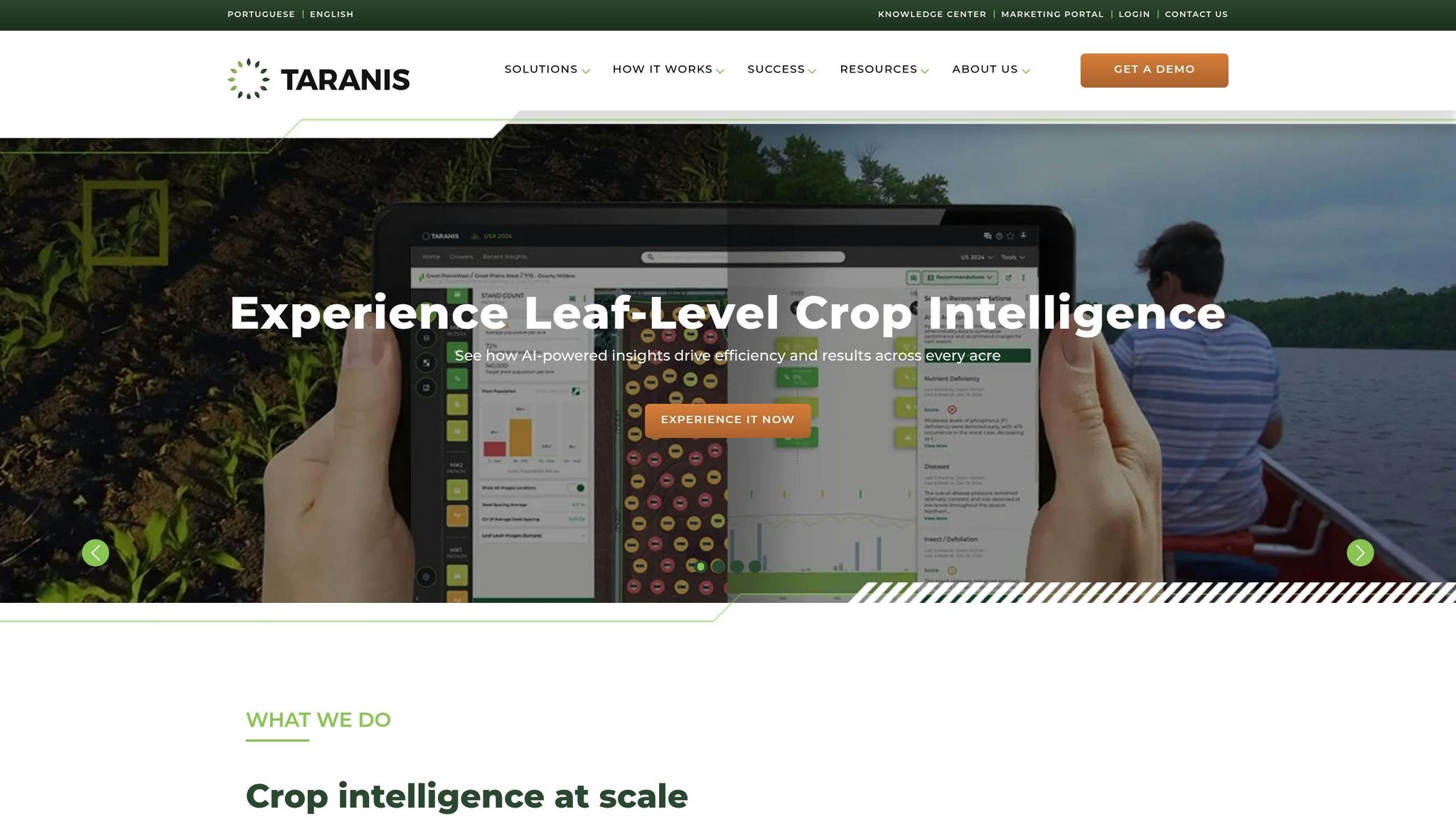
Taranis blends advanced AI with ultra-high-resolution imagery to deliver precise crop monitoring and early disease detection. By capturing images at an impressive 0.3 to 0.5 millimeters per pixel [22], the platform provides farmers with detailed, leaf-level insights that go far beyond what traditional scouting methods can achieve. With over 500 million data points powering its AI models, Taranis has become one of the most advanced tools in agricultural intelligence today [25]. Beyond real-time insights, it also offers predictive analytics and easy-to-use reporting tools to help farmers make informed decisions.
Real-time Monitoring and Disease Detection
Taranis takes a multi-platform approach, using drones, planes, and satellites to monitor vast areas of farmland at a leaf-level resolution [21]. Each aircraft can map up to 5,000 acres daily, capturing between 1.6 and 3.2 samples per acre to ensure thorough coverage [23]. The AI models are trained to identify up to 74 weed species while detecting diseases and nutritional deficiencies [23].
The platform delivers results within 72 hours of image collection, diagnosing issues 20 times faster than traditional methods and providing 20 times more data points [39, 40]. For example, in August 2023, Taranis identified spot weed problems on 45 out of 150 acres for a corn farmer in South Dakota, potentially saving $140 per acre [20]. Similarly, a corn grower in Illinois was alerted to a low plant population on 29.5 acres in time to replant and prevent further yield loss [20]. These capabilities pave the way for robust predictive analytics.
Predictive Analytics for Proactive Solutions
Taranis goes beyond real-time monitoring with predictive analytics that help farmers address threats before they escalate. By analyzing high-resolution imagery, weather forecasts, and sensor data, the platform provides both site-specific and regional insights [26]. According to Taranis, its AI achieves over 90% accuracy in detecting and predicting threats. It uses multispectral imagery at 8–12 cm resolution and integrates a weather model that is 75 times more detailed than standard forecasting tools [26].
"Instantaneous insights create new efficiencies and opportunities." – Opher Flohr, CEO of Taranis [27]
Accessible on Web and Mobile
Taranis ensures accessibility through both web and mobile platforms [28]. The mobile app even includes offline functionality, allowing advisors and scouts to review insights and annotate images without a data connection - an essential feature for remote areas [29]. Additionally, the platform generates grower-friendly reports that can be downloaded and shared for in-field discussions [29].
Tailored for U.S. Growers
Taranis is committed to serving U.S. farmers, with a database of over 1 million threat species that helps create precise plans tailored to local conditions [24]. Mike DiPaola, General Manager of North America and Vice President of Global Sales at Taranis, highlights this focus:
"We provide the best technology in the industry and it defies traditional categorization. Growers deserve and will expect a greater level of quicker and more reliable crop services. Our portfolio of technologies will create more predictability and reliability for growers and providers, worldwide." [24]
6. AgroScout
AgroScout is a cutting-edge AI tool designed to improve crop monitoring and predictive analytics, helping farmers protect their yields. By combining AI-powered analytics with diverse data collection methods, AgroScout tackles a major issue in U.S. agriculture - farmers lose about 20% of their yield to diseases each year [31]. Using drone imagery, satellite data, and smartphone photos, the platform creates a comprehensive system for early disease detection and outbreak prediction. Here's a closer look at its standout features.
Real-time Monitoring and Disease Detection
AgroScout employs a five-layer data analysis system to minimize yield losses [30]. It processes images from smartphones, drones, and satellites, making it accessible for farms of all sizes thanks to its compatibility with standard drones and mobile devices [30] [35] [37]. In just 20 minutes, the system can scout 5,000 plants across 50 acres using off-the-shelf drones [34].
Before farmers take action, agronomists verify the findings and provide detailed, GPS-tagged reports for precise treatment [37]. AgroScout also generates high-resolution orthomosaic photos (1 cm/pixel) by stitching together drone images. Additionally, it incorporates satellite imagery, including NDVI and RGB data, to monitor field health and detect early signs of stress [34] [38].
Predictive Analytics for Outbreak Forecasting
AgroScout goes beyond monitoring by using its data to predict potential disease outbreaks in specific regions [30]. The platform sends supply chain alerts, helping farmers and processors address risks before they escalate [32]. Automated pest monitoring systems like AgroScout are expected to cut manual scouting efforts by up to 60% by 2027 [33].
A real-world example of AgroScout's impact comes from a potato grower in Paraná, Brazil. In February 2023, AgroScout identified a severe late blight infestation in one field. After prompt treatment, the disease was eradicated within a week, saving over 3 tons of crops per hectare and resulting in significant financial gains [39].
"I decided to use AgroScout managing because it's easy to use, it's easy to operate and fly with the drone and it could change everything in my work with disease insects and viruses." – Alexandre Dzierwa, Brazil potato grower [35]
Mobile and Web Accessibility
AgroScout ensures ease of use with synchronized mobile and web platforms. The mobile app allows farmers to collect on-the-ground data using smartphones, while the Sky App for DJI drones is available on the Google Play Store. The web platform provides access to real-time crop data, including growth trends, soil conditions, and weather forecasts. For added convenience, the "Walk-to-the-Plant" feature uses geo-tagged photos to help farmers locate specific plants in the field, even without an internet connection [36] [38] [40].
Tailored for U.S. Farmers
AgroScout is designed to meet the needs of American agriculture, supporting multiple languages and a variety of crops. The platform has proven effective for key U.S. crops, as highlighted by testimonials from local growers and processors.
"From using AgroScout crop monitoring services we have greater visibility for planning and managing supply across multiple sites and better predictability of supply. This has helped us to win and maintain contracts and provide a better quality of service to our customers." – USA Processor, Monitoring for potato grower USA [35]
sbb-itb-4d6a8dd
🎨 Visualize Your Dream Garden Today!
Transform any outdoor space into a professional landscape design in minutes. Just upload a photo, choose your style, and let our AI do the rest.
Start your garden transformation now →7. DeepDetect
DeepDetect is a deep learning platform designed to tackle plant disease detection and predict outbreaks, making strides in proactive agriculture management. By using Convolutional Neural Networks (CNNs), it identifies even the faintest signs of plant diseases with impressive precision, achieving accuracy rates between 99% and 99.2% when classifying images of infected leaves [42]. This capability enables both real-time detection and predictive analytics, offering farmers a powerful tool to combat crop diseases.
Real-time Monitoring and Disease Detection
DeepDetect processes high-resolution images using CNNs to extract critical features and classify diseases [42]. This is crucial, considering that crop diseases and pests contribute to 20–40% of global agricultural losses [43]. The platform employs transfer learning to adapt swiftly to new crops and disease patterns, while ensemble methods further refine its performance [42]. These features enable accurate and efficient disease detection, helping minimize agricultural losses.
Predictive Analytics for Outbreak Forecasting
DeepDetect goes beyond detection by integrating predictive analytics into its platform. It adjusts for environmental factors to provide tailored forecasts based on local growing conditions and disease trends [41]. This capability extends to studying crop-pest interactions and how crops respond to environmental changes, offering deeper insights into disease dynamics [41]. These predictive tools support timely interventions, helping farmers stay ahead of potential outbreaks.
Mobile and Web Accessibility
One of DeepDetect's standout features is its accessibility through mobile and web platforms. A study published in IEEE Access in January 2025 highlighted a CNN-based mobile app achieving over 92% accuracy with a response time of just 2 seconds. This allows farmers to capture images and receive instant diagnoses [44].
"Our system bridges the gap between deep learning research and real-world agricultural application by combining accurate classification, interpretable severity estimation, and mobile accessibility. This approach offers farmers a powerful, on-device digital assistant to monitor crop health and make informed intervention decisions."
- Ramana Reddy Bussipalli, Gauri Kalnoor, Mudigonda Devashish, and Palagiri Sai Karthik Reddy (IEEE Access, January 2025) [44]
The app's user-friendly interface shows classification results alongside overlays that highlight infected areas and calculate severity percentages. This helps farmers prioritize treatments effectively. While data augmentation enhances accuracy under diverse conditions, some mobile devices may face challenges due to the platform's computational demands [42].
8. Microsoft Azure FarmBeats
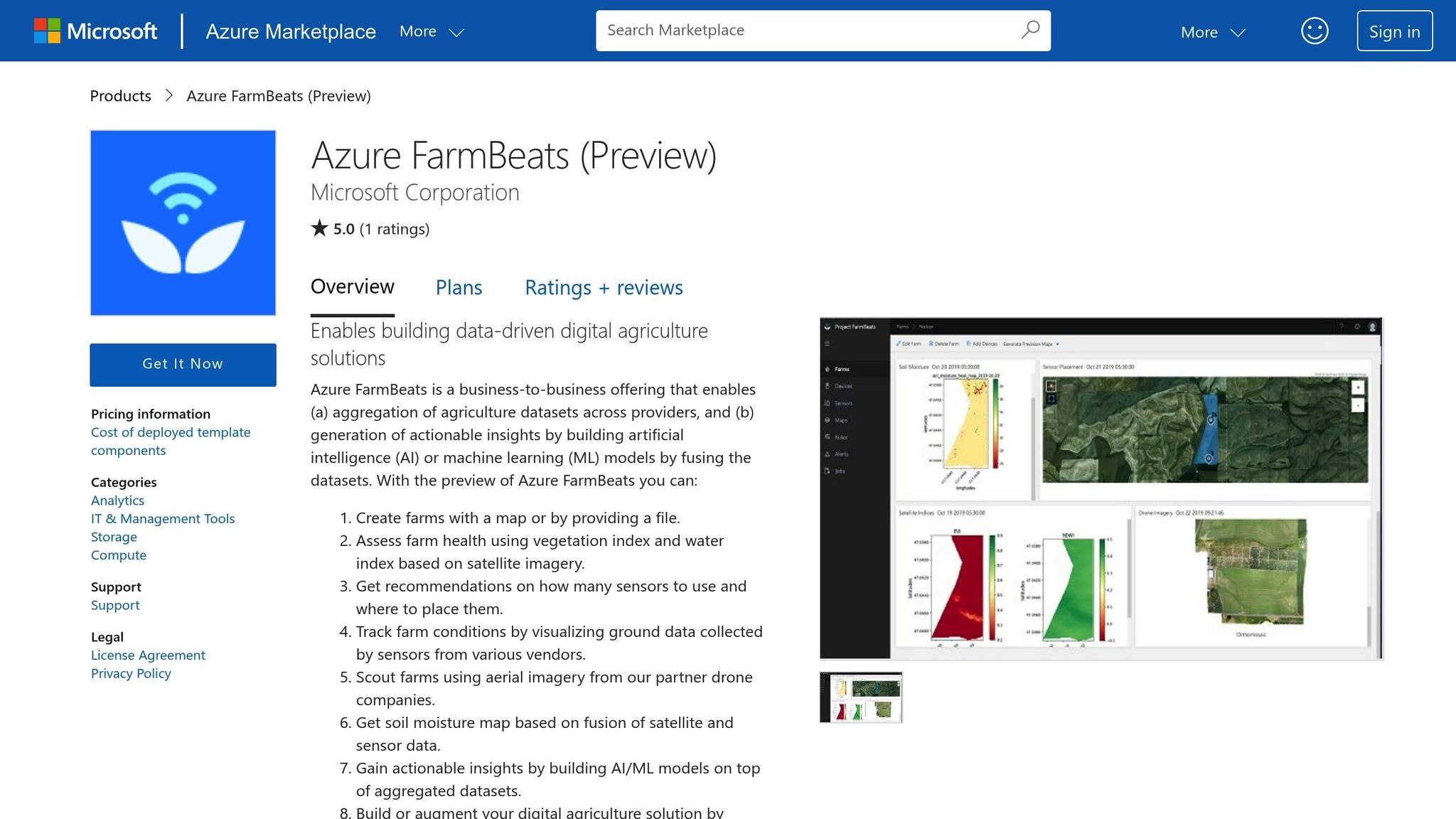
Microsoft Azure FarmBeats is changing the way farmers manage plant diseases and monitor crop health. This cloud-based platform brings together data from multiple sources, creating a unified system to help predict and address potential disease outbreaks on U.S. farms.
Real-time Monitoring and Disease Detection
Azure FarmBeats stands out by combining data from various agricultural sources and using AI and machine learning to generate insights. Farmers can monitor field conditions in real time, thanks to ground sensors that provide a clear picture of crop health [45][46].
The platform also integrates drone-based scouting for aerial imagery and combines satellite and sensor data to create detailed soil moisture maps. Researchers at NC State have taken this a step further, using FarmBeats’ IoT technology to detect plant diseases by analyzing volatile organic compounds (VOCs) released by plants. Led by Ralph Dean, the team is working on sensors to identify fungal diseases like Southern corn leaf blight in corn crops [47].
"By integrating sensors with different capabilities, we will be able to pinpoint specific diseases. By detecting a disease before it becomes an epidemic, we can reduce crop loss and increase profitability. And this early detection will allow farmers to apply pesticides and fungicides in a more targeted manner, reducing those costs and environmental impacts." - Ralph Dean, William Neal Reynolds professor of plant pathology [47]
Predictive Analytics for Outbreak Forecasting
One of FarmBeats' biggest strengths is its predictive analytics. By combining data from sensors, drones, and satellites, the platform uses AI and ML models to forecast disease outbreaks before they happen [45][46]. At NC State, researchers are leveraging SAS’s Viya data-analytics pipeline alongside Microsoft Azure to process data from VOC, environmental, and satellite imaging sensors. This approach makes it easier to detect diseases early and create targeted responses [47].
The platform streams agricultural data to Microsoft Azure, where SAS Analytics processes it to tackle plant pests and improve the resilience of farming systems [47].
Tailored for U.S. Crops and Regions
Microsoft has shown its dedication to U.S. agriculture by partnering with organizations like the USDA to test FarmBeats under local conditions. A pilot program at the Beltsville Agricultural Research Center in Maryland highlighted the platform’s effectiveness for American farms [48].
FarmBeats has been deployed across the country, helping farmers increase productivity by up to 67% while cutting resource use [48]. For instance, an 11-month trial at Nelson Farm in Spokane, Washington, led to a 90% reduction in chemical applications and a 15% cost savings. With accurate temperature predictions, the farmer was also able to prepare for severe freezes [48].
"[We're capturing] large amounts of data from farm[s] and then us[ing] AI and machine learning to translate that data into insights for the growers … When we talk to growers, a lot of the decisions they make are based on guesswork, and we want to replace that guesswork with data." - Ranveer Chandra, FarmBeats project lead and chief scientist at Azure Global [48]
9. PlantDoc
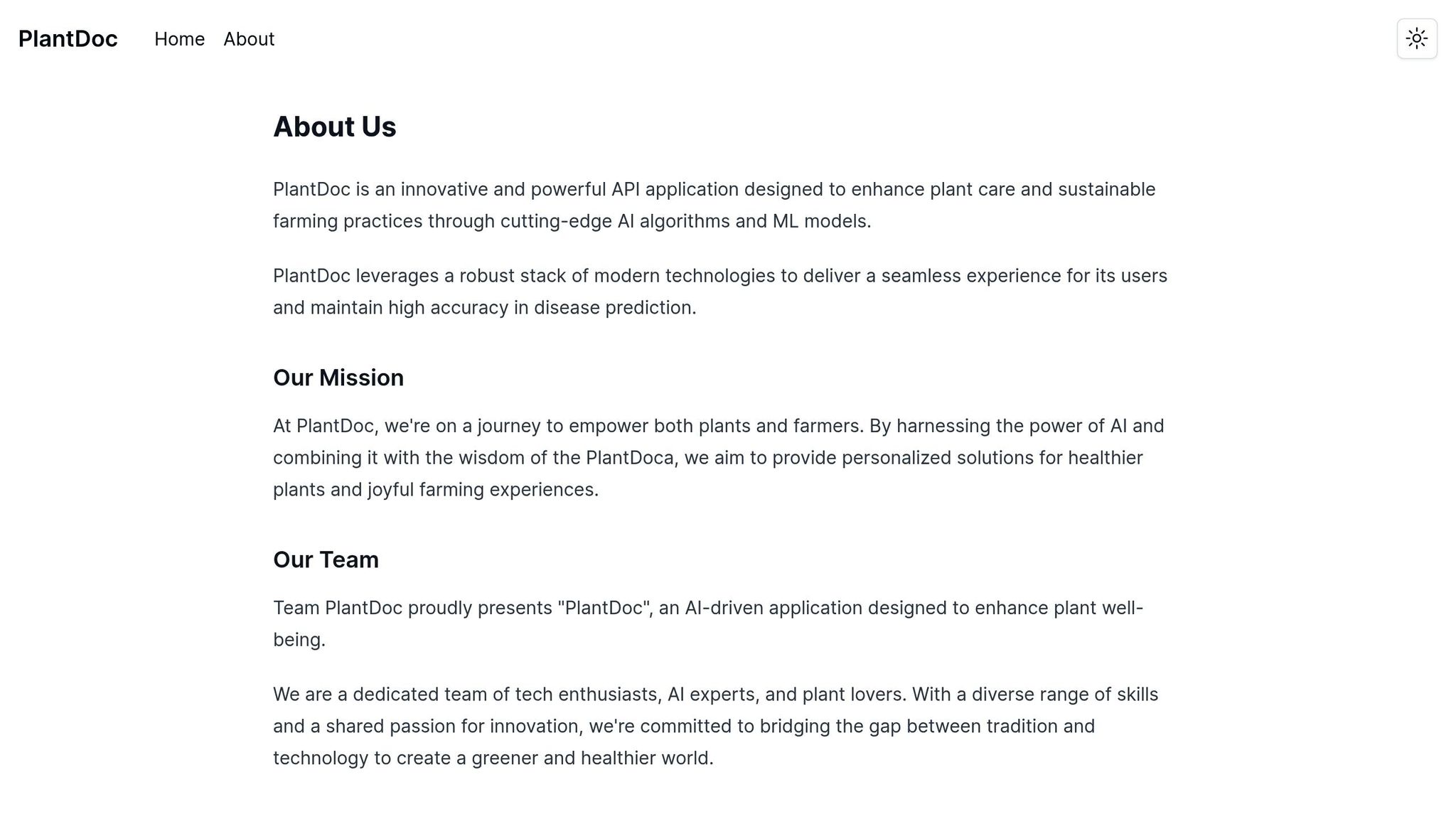
PlantDoc combines field data collection with advanced machine learning to help U.S. farmers detect plant diseases. It’s designed to work with images taken directly in farming environments, tackling the everyday challenges growers face.
Real-time Monitoring and Disease Detection
PlantDoc uses real-time images of both healthy and diseased plants [3], allowing it to accurately identify issues in natural field settings. By processing images taken in varying lighting conditions and backgrounds, its deep learning models can quickly detect diseases and recommend treatments [3][51]. Unlike controlled lab setups, this approach focuses on real-world conditions, making it especially practical for farmers managing their fields. These capabilities highlight how AI can play a proactive role in improving field management.
Mobile and Web Accessibility
The platform is available on both mobile and web, letting farmers capture and analyze images on the spot. Studies show that MobileNets-based tools offer high accuracy and fast performance in field applications [50].
PlantDoc’s dataset includes 2,598 data points [49][50], covering a wide variety of plant health conditions and diseases. This rich database ensures reliable detection across diverse farming scenarios.
Focus on U.S.-Specific Crops and Regions
PlantDoc is tailored for U.S. agriculture, supporting key crops like apples, bell peppers, blueberries, cherries, corn, grapes, potatoes, and tomatoes. Its dataset features images of 13 plant species and 17 disease categories, providing extensive coverage of crops vital to the U.S. economy.
10. AI-Powered Scouting Apps
AI-driven scouting apps are transforming how U.S. farmers monitor and manage their crops. These tools combine real-time diagnostics with predictive insights, offering a smarter way to tackle challenges in the field. Accessible via smartphones, they blend advanced algorithms with extensive plant databases to help farmers make faster, more informed decisions.
Real-time Monitoring and Disease Detection
With just a smartphone, farmers can snap a picture of a plant and get instant feedback. Using deep learning, these apps analyze symptoms on leaves, stems, and fruits to identify diseases, plant species, and even suggest tailored solutions - all within seconds [52]. Capable of recognizing thousands of species and diseases with over 90% accuracy, these tools enable quick action to minimize losses and promote efficient farming practices [1].
Predictive Analytics for Outbreak Forecasting
Beyond identifying current issues, these apps use predictive analytics to forecast disease trends. They assess factors like disease severity, geographic spread, and potential risks. Farmers also receive early alerts about possible outbreaks and real-time updates on unusual weather or field conditions [54] [55].
"AI offers powerful tools for predicting and managing disease outbreaks, enabling early detection, efficient resource allocation, and proactive interventions." - Frost & Sullivan Institute [53]
Mobile and Web Accessibility
These scouting apps aren’t just limited to smartphones - they also work seamlessly on web platforms. Many integrate with tools like soil sensors and water quality monitors, providing a comprehensive view of crop health [56] [57]. Compared to traditional methods, these digital tools can cut field monitoring time by up to 50%, making them invaluable for busy farmers [57].
Support for U.S.-Specific Crops and Regions
Designed with U.S. agriculture in mind, these apps excel at detecting diseases common to American crops, achieving up to 100% accuracy in some cases. Over 60% of users report yield increases of 20% or more within just one year of using these tools [56] [57].
"AI has enabled the effective use of vast amounts of agricultural data, providing mobile app users with actionable insights and the ability to identify root causes for problem solving in-season or to plan for the next crop season." - Tim Hassinger, President and CEO, Intelinair [58]
When choosing a scouting app, farmers should look for features like offline functionality for remote areas and strong data security to safeguard their information [57]. Practicality and ease of use are key to ensuring these tools enhance productivity without adding unnecessary complexity.
🌺 Professional Garden Design in Minutes!
Stop wondering what your garden could look like. Upload a photo and let our AI show you 50+ professional design possibilities instantly.
Transform your garden now →Tool Comparison Chart
Choosing the right AI tool for disease prediction depends on your specific needs, budget, and the scale of your farming operation. The chart below offers a side-by-side comparison of popular tools, while the following breakdown highlights key differences in areas like accuracy, cost, and integration capabilities.
| Tool | Real‑Time Monitoring | Predictive Analytics | U.S. Crop Support | Accuracy Rate | Pricing | Platform Access |
|---|---|---|---|---|---|---|
| Farmonaut AI Plant App | Satellite + smartphone imaging | Weather‑based forecasting | Corn, soybeans, wheat | 90%+ | Cost-effective for large operations | Web, Android, iOS |
| PlantVillage Nuru | Smartphone camera analysis | Limited outbreak forecasting | General crop support | 90%+ | Free basic version | Android, iOS |
| IBM Watson Decision Platform | IoT sensor integration | Advanced ML predictions | Customizable for all U.S. crops | 95%+ | Enterprise pricing | Web-based |
| PEAT Plantix | Instant photo diagnosis | Basic trend analysis | 500+ crop varieties | 90%+ (vs. 60–70% human experts) | Freemium model | Android, iOS |
| Taranis | High-resolution aerial imaging | AI-powered outbreak alerts | Row crops, specialty crops | 98%+ | Subscription-based | Web, mobile |
| AgroScout | Drone and ground scouting | Predictive disease modeling | Field crops, orchards | 95%+ | Per-acre pricing | Web platform |
| DeepDetect | Computer vision analysis | Deep learning predictions | Customizable datasets | 99.35%+ | Custom enterprise | API integration |
| Microsoft Azure FarmBeats | Multi-sensor data fusion | Cloud-based analytics | All major U.S. crops | 97%+ | Pay-per-use | Azure cloud |
| PlantDoc | Mobile image recognition | Basic forecasting | 27 plant species | 90%+ | Research-focused | Mobile app |
Each tool brings something different to the table, making it easier for U.S. farmers to find the solution that best fits their needs.
Accuracy rates vary widely, with DeepDetect standing out at 99.35% for crop disease detection. Research also highlights that models like ResNet-50 in federated learning systems can achieve 99.5% accuracy, while U-Net models reach 97.13% for detecting wheat yellow rust [1].
Cost considerations play a big role in decision-making. For instance, Farmonaut offers an affordable option for large-scale operations, while tools like IBM Watson and Microsoft Azure FarmBeats provide enterprise-level pricing tailored to farm size and specific needs.
Regional crop support also differs significantly. PEAT Plantix, for example, supports over 500 crop varieties and is used by nearly 10 million farmers annually [15].
Integration options vary depending on the platform. IBM Watson and Azure FarmBeats offer full IoT sensor integration for advanced monitoring, while mobile apps like PlantVillage Nuru and Plantix focus more on smartphone-based diagnostics. Farmonaut bridges the gap by integrating satellite technology with mobile apps, offering a comprehensive set of tools on both web and mobile platforms [2].
Predictive analytics capabilities range from basic trend analysis to sophisticated machine learning forecasts. Enterprise platforms often leverage historical data, weather trends, and environmental factors to deliver highly detailed predictions. Studies show that AI can reduce crop losses by 30–50% and pesticide use by 20–40% [59].
For U.S. farmers, the right choice depends on balancing accuracy, cost, and usability. Freemium tools like Plantix may appeal to small and medium-sized farms, while large-scale commercial operations might prefer enterprise solutions like Taranis or IBM Watson for their comprehensive monitoring and predictive capabilities.
This comparison underscores how AI tools are transforming the way farmers manage plant diseases, helping them make smarter, data-driven decisions.
Conclusion
AI-powered tools are reshaping the way U.S. farmers protect their crops, delivering exceptional results. With accuracy rates reaching up to 98%, these tools outperform traditional visual inspections by a wide margin [59]. Farmers using AI systems report impressive outcomes, including 30–50% reductions in crop losses, thanks to early detection and targeted treatment strategies. Similar success stories are emerging across the U.S., highlighting the transformative potential of these technologies [59].
One of the standout benefits is the reduction in pesticide use. For example, California vineyards using FarmSense's AI monitoring system have seen pesticide usage drop by 40%. This is achieved by applying treatments only where and when they are needed, minimizing chemical runoff, protecting beneficial insects, and promoting more eco-friendly farming practices [59].
AI doesn't just help the environment - it also streamlines farm operations. These systems can monitor up to 100 acres daily, a task that would require far more time and labor if done manually [59]. Additionally, advanced imaging combined with AI can detect plant diseases up to 10 times faster than traditional methods, giving farmers a critical edge in addressing issues before they escalate [60].
For home gardeners, AI tools bring professional-level plant care to their fingertips. Smartphone apps now allow users to snap a photo of their plants and receive instant feedback on potential issues. Whether tending to a small backyard garden or managing a sprawling commercial farm, these tools offer scalable solutions tailored to various needs and budgets.
The broader market trends underscore the growing role of AI in agriculture. By 2027, the global AI in agriculture market is projected to hit $4 billion [59]. As these tools become even more precise and affordable, they are set to become a cornerstone of modern plant care and farming in the U.S., revolutionizing both large-scale agriculture and home gardening with early detection and precise interventions.
FAQs
How do AI tools help integrate plant disease prediction with farm management systems?
AI tools that predict plant disease outbreaks work hand-in-hand with farm management systems by leveraging advanced data-sharing technologies. They connect effortlessly through APIs or similar interfaces, enabling the real-time flow of essential information such as weather patterns, soil conditions, and crop performance.
This data is then pulled into farm management dashboards, offering practical insights that empower farmers to make smarter decisions. These systems can handle tasks like sending timely alerts, suggesting specific treatments, or fine-tuning resource allocation, helping to boost productivity and maintain healthier crops.
What are the costs and benefits of using AI tools for detecting plant diseases?
The costs of AI-driven plant disease detection tools can differ based on the platform and how extensively they’re used, but they’re often considered a smart investment, especially for larger farms. These tools can cut down on labor costs, streamline operations, and allow for more targeted disease management.
The potential return on investment (ROI) is substantial. Farmers can see higher crop yields, reduced losses from disease outbreaks, and better use of resources. By enabling timely and precise interventions, these tools not only boost profitability but also support healthier crops. For U.S. farmers, this mix of cost savings and increased productivity makes AI tools an essential part of modern farming practices.
How do AI tools help farmers in remote areas with limited internet access?
AI tools tackle the issue of limited internet access in remote farming areas by leveraging edge computing. This approach processes data directly on local devices, reducing dependence on cloud systems and ensuring consistent performance without requiring a constant internet connection.
In addition, many tools incorporate low-latency IoT networks and satellite-based communication systems. These technologies enable reliable data transmission even in regions with weak or nonexistent internet infrastructure. As a result, farmers can still tap into AI-powered insights to improve crop management and make informed decisions, no matter the connectivity challenges.
Related posts
Related Articles
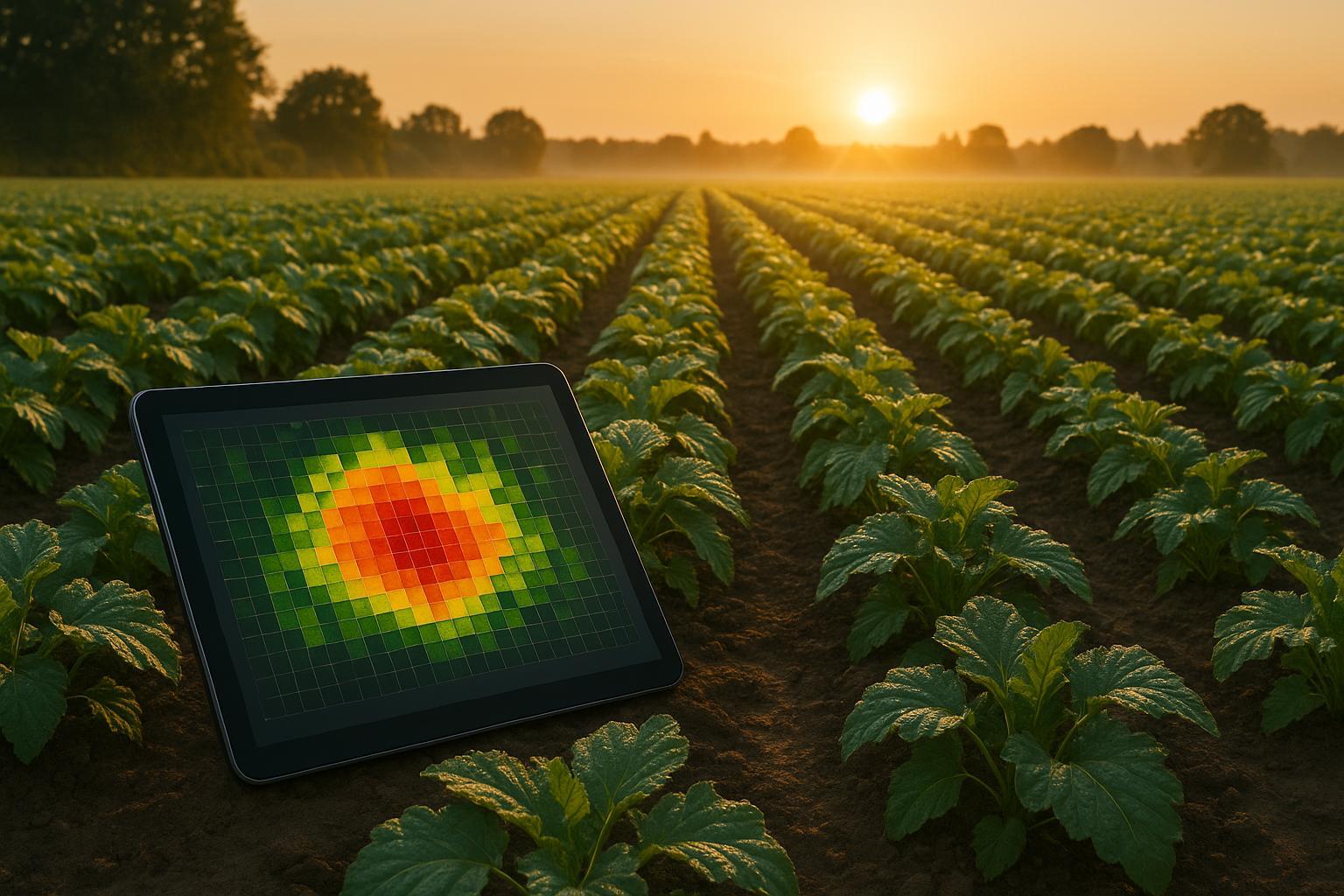
How AI Predicts Seasonal Plant Diseases
Explore how AI predicts seasonal plant diseases using data analysis, enhancing crop health, and promoting sustainable gardening practices.
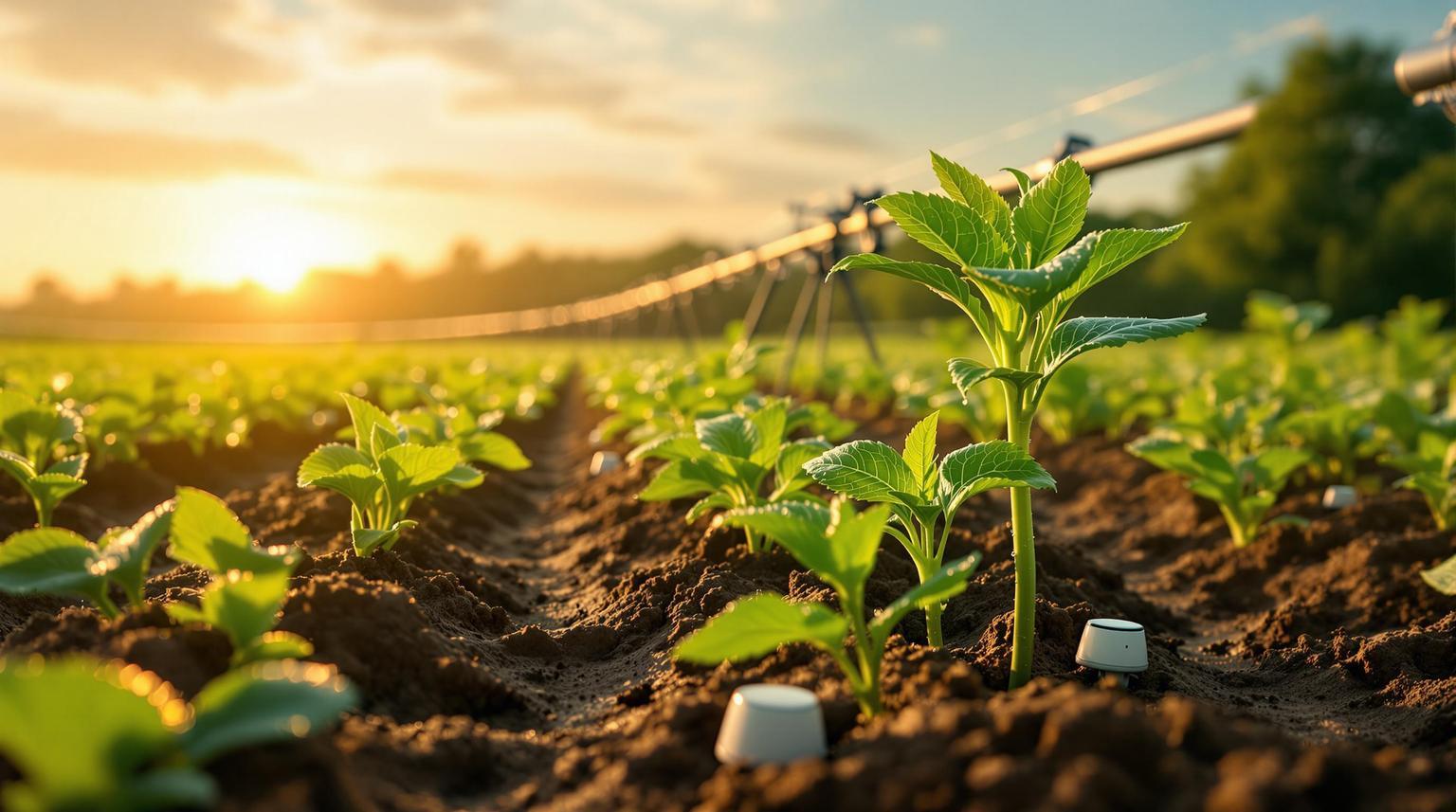
How AI Improves Soil Moisture Data Analysis
Explore how AI enhances soil moisture analysis, optimizes irrigation, and promotes healthier plants while conserving water in agriculture.

Is Garden Center Point a Legitimate Source for Your Gardening Needs? A Review
Looking for a reliable garden center? Read our review of Garden Center Point to learn about their legitimacy, selection, and customer reviews.
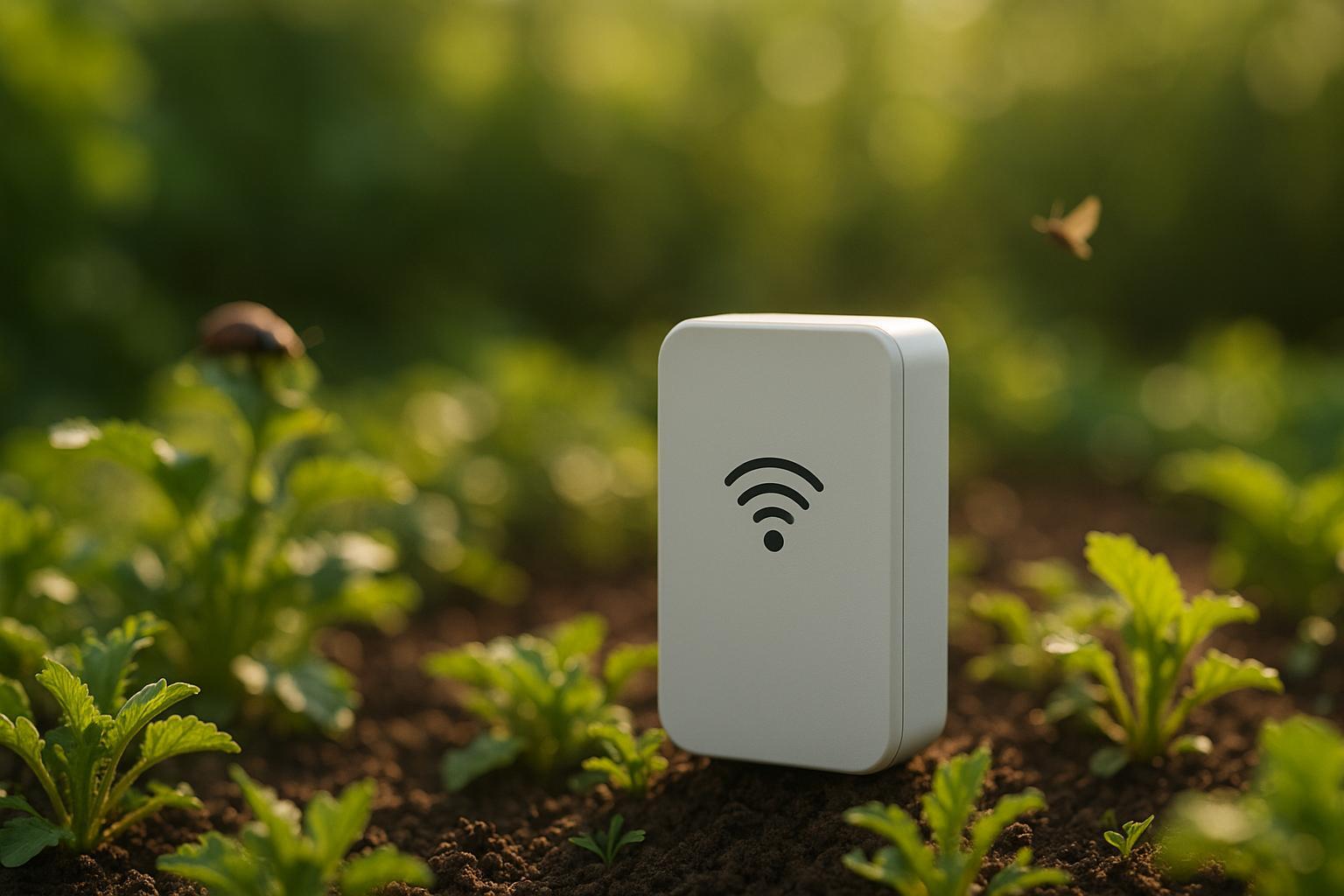
Ultimate Guide to Acoustic Pest Monitoring
Explore acoustic pest monitoring, a sound-based method that detects pests early, reduces pesticide use, and enhances garden management with AI.

Top Plants for Carbon Sequestration
Explore how selecting the right plants for your garden can enhance carbon sequestration, support local ecosystems, and promote sustainability.
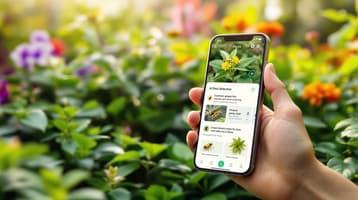
How AI Apps Detect Garden Pests in Real Time
AI apps revolutionize pest management by providing instant identification and tailored solutions for garden pests, enhancing plant protection.